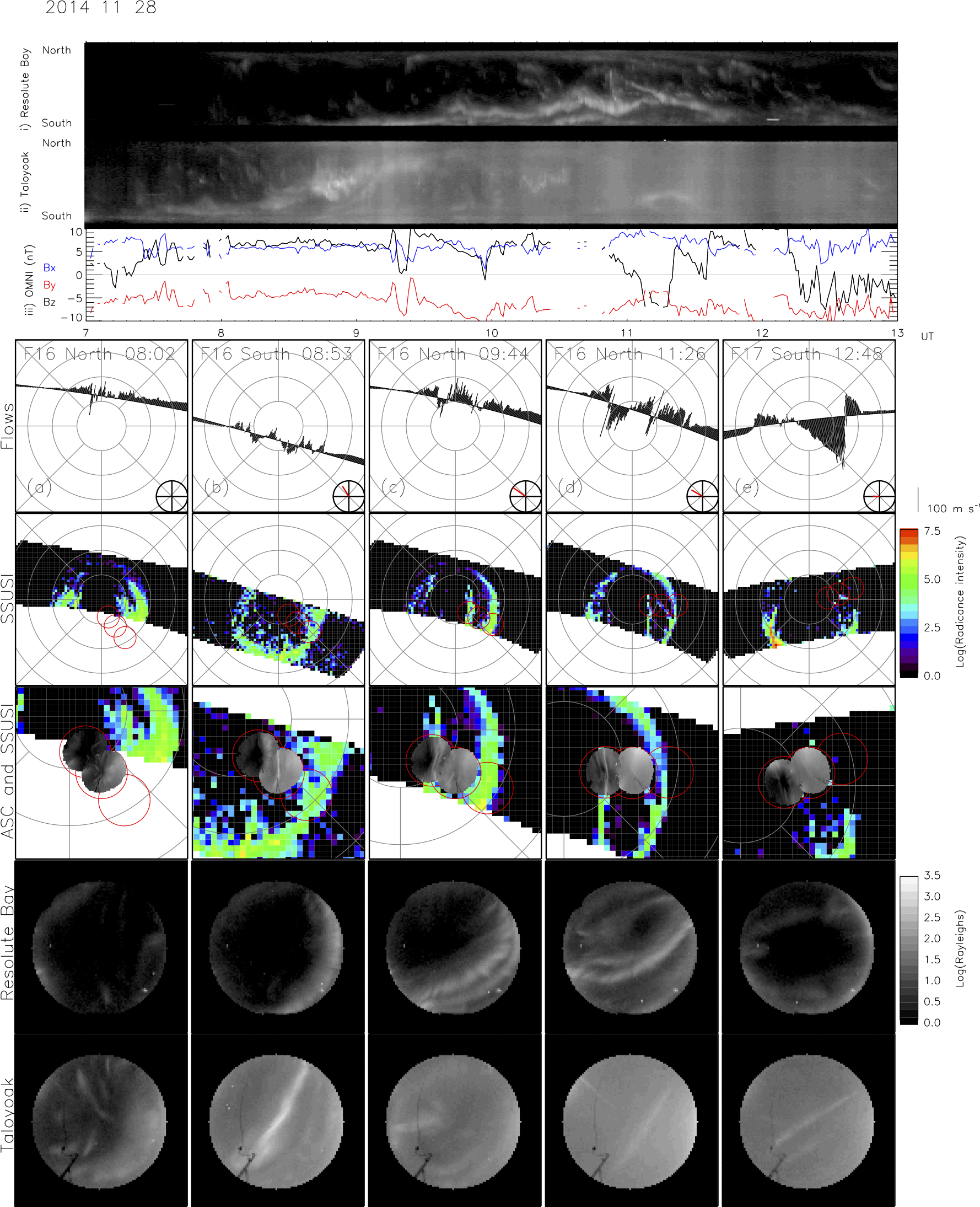MIST
Magnetosphere, Ionosphere and Solar-Terrestrial
Formation and Motion of Horse Collar Aurora Events
By Gemma Bower (University of Leicester)
Horse collar aurora (HCA) are an auroral phenomena that occurs under northward IMF where the polar cap becomes teardrop shaped due to the poleward motion of the dusk and dawn sectors of the auroral oval. Their formation has been linked to prolonged periods of dual-lobe reconnection (DLR). This occurs when the same IMF magnetic field line reconnects in both the northern and southern hemisphere lobes when the IMF clock angle is small. This leads to the closure of magnetic flux at the dayside magnetopause. In order to further study the motion of HCA a list of HCA events previously identified in UV images captured by the Special Sensor Ultraviolet Spectrographic Imager (SSUSI) instrument on-board the Defense Meteorological Satellite Program (DMSP) spacecraft F16, F17 and F18 has been used. Events that have concurrent 630.0 nm all-sky camera (ASC) data from the Redline Geospace Observatory (REGO) Resolute Bay site are studied in more detail, making use of the higher cadence of the ASC images compared to DMSP/SSUSI. 11 HCA events are classified based on the IMF conditions at the end of the event. A southward turning of the IMF ends five events, two end with positive By dominated IMF and four with negative By dominance. The figure shows one of the studied events that ends with a southward turning of the IMF. Under positive (negative) By the arcs move duskward (dawnward) in the northern hemisphere with the opposite true in the southern hemisphere. Under a southward turning the arcs move equatorward. These results are in agreement with previously proposed models. Understanding the evolution of HCA will allow DLR to be studied in more detail.

Please see paper for full details: Bower, Bower, G. E., Milan, S. E., Paxton, L. J., Spanswick, E., & Hairston, M. R. (2023). Formation and motion of horse collar aurora events. Journal of Geophysical Research: Space Physics, 128, e2022JA031105. https://doi.org/10.1029/2022JA031105